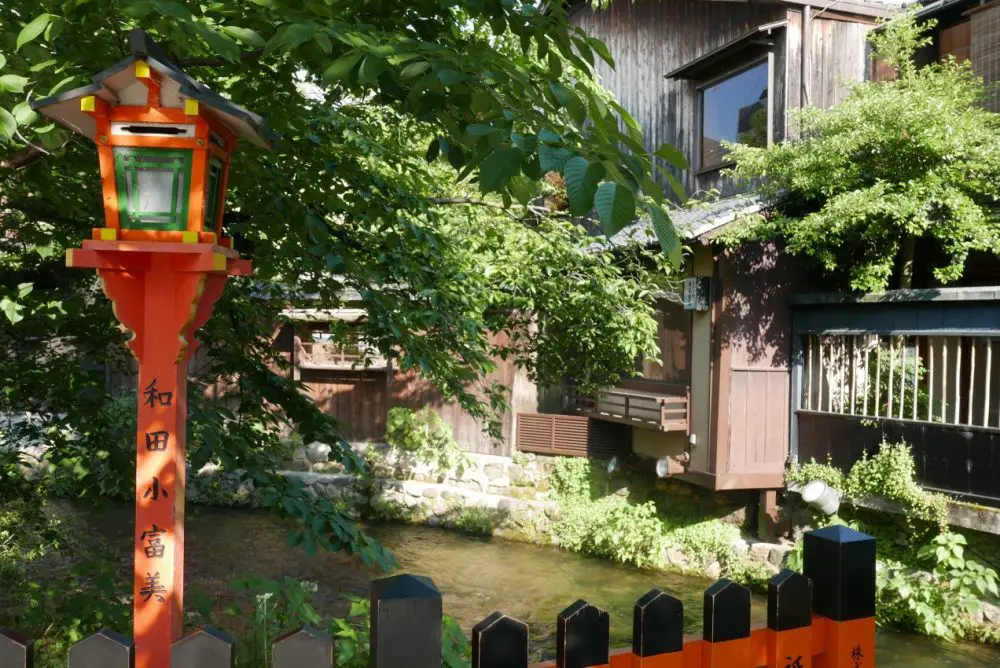
What are these things you speak of?
I hear ya, I didn’t know either. When you think of Japan typically you think of bright lights in late night cities, robots, sex dolls, anime and electric toilets. You probably don’t think of rural Japan or how it was before the tech boom. Well, a ryokan is a great way to experience that side of Japan and to escape the excitement of the big cities for a while.
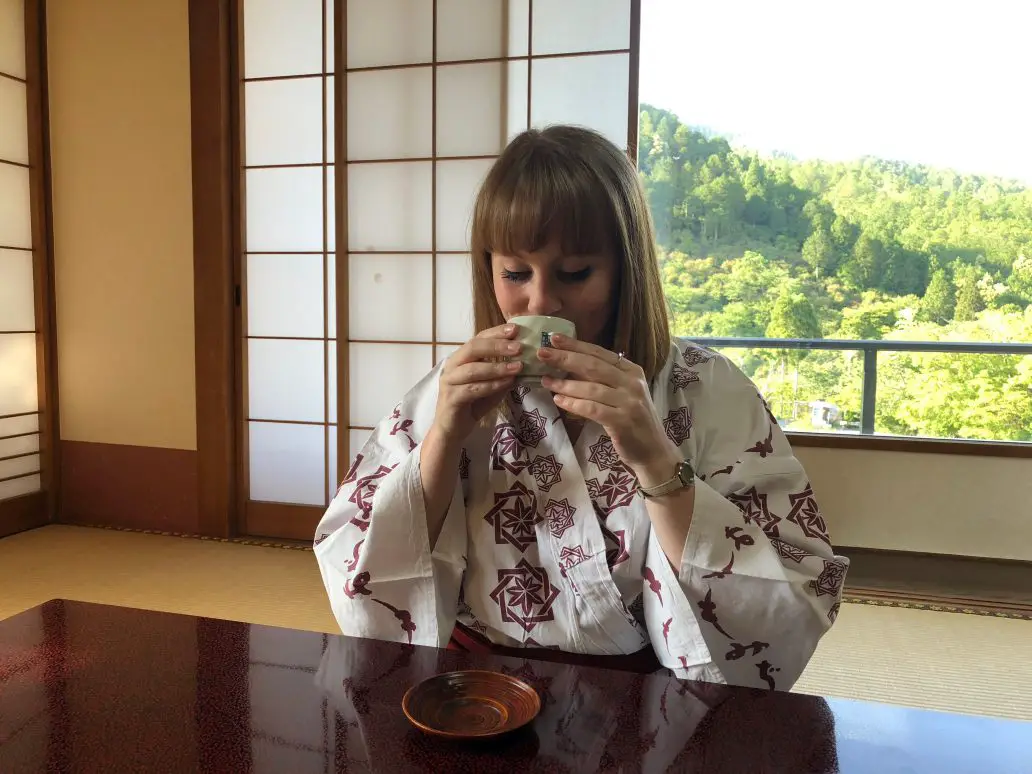
Tell me more about the Ryokan
A ryokan is a traditional and usually older Japanese inn or guest house. Of course you get modern examples but usually, they will at a minimum, include traditional tatami bedrooms and an onsen (more of which later). We were really keen to stay in one during our trip there and spent a while looking for somewhere affordable but with a touch of luxury. Be warned, a decent Ryokan is not cheap, expect to pay upwards of £250 a night for somewhere really. nice. They also book up ahead of time, as we discovered with two weeks until our trip and a hopeless search ahead of us. We were lucky though and found Momijiya Honkan which turned out to be just as amazing as we hoped.
Momijima is out in the hills on the banks of the Kiyotakigawa River and quite difficult to get to yourself without a car. But do not fear, they have a shuttle bus from Hanazono train station which is easily accessible from Kyoto (and on the JR line if you’re using a rail pass). The location is great if you’re interested in walking and seeing temples, with two nearby (Saimyo-Ji Temple, and Kozan-Ji Temple). When we were there we were in full ‘chill mode’ and once changed into our yukata (casual summer kimono, worn by guest around a ryokan and sometimes the local village too), we did nothing more than bathe, relax and eat!
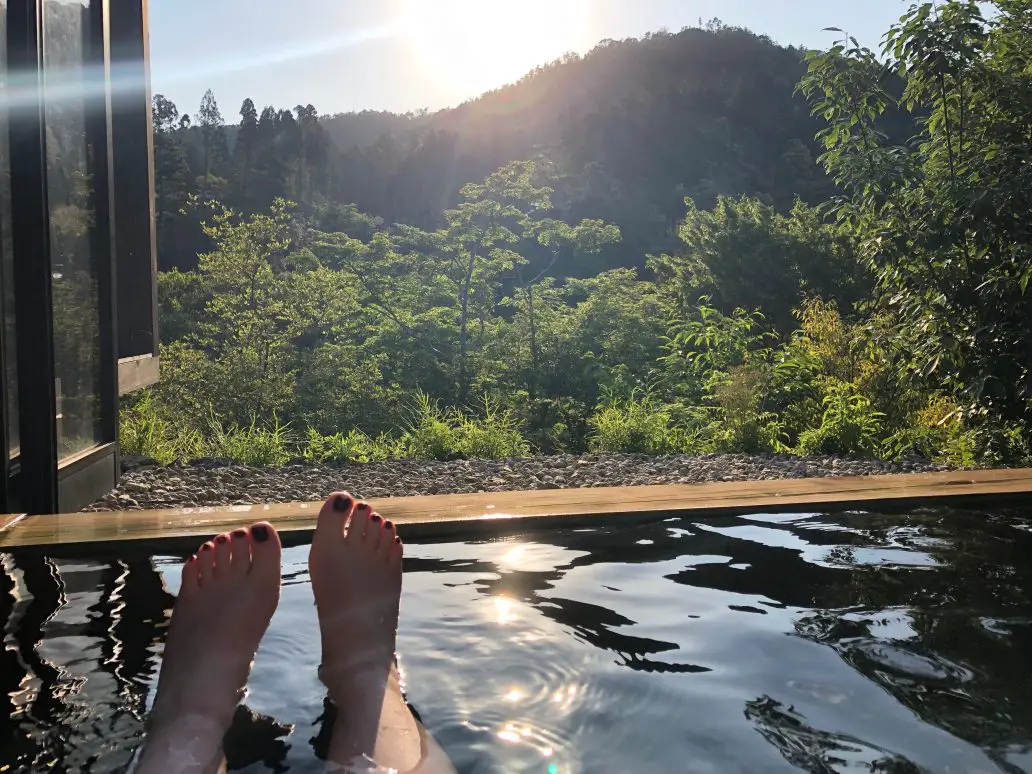
The most relaxing thing you can do at a Ryokan is use the onsen.
Onsen bathing explained
An onsen is a traditional Japanese bathhouse, usually fed by natural hot springs. In fact, the government has regulation around the amount of minerals which have to be present in the water for a bath house to qualify as an onsen. We didn’t need to worry at Momijiya Honkan, they were surrounded by mountains and rivers and had both the usual male /female public onsen (free to hotel guests) and private baths (payable) for families and couples. We tried both while we were there. You bathe in the nude, first washing with the showers before bathing in the various hot and cool mineral baths. It’s quite the experience.
The private baths, perched on top of a hill, face out over the trees and mountains. I felt strange at first, climbing up the steps in my gown only to then go into a wooden structure and take all my clothes off. But it was liberating. We rolled the roof back on the wooden building and threw open the doors to watch the sunset while we laid back and relaxed. It was wonderful and well worth spending the £40 it cost to hire.
I was a little more nervous about the shared public onsen – being British and a bit wobbly in places, I was apprehensive about getting my kit off in front of strange women. I needn’t have worried as actually, I had the entire place to myself! The views were wonderful again and the soaps and lotions were heavenly. I felt well and truly refreshed by the end.
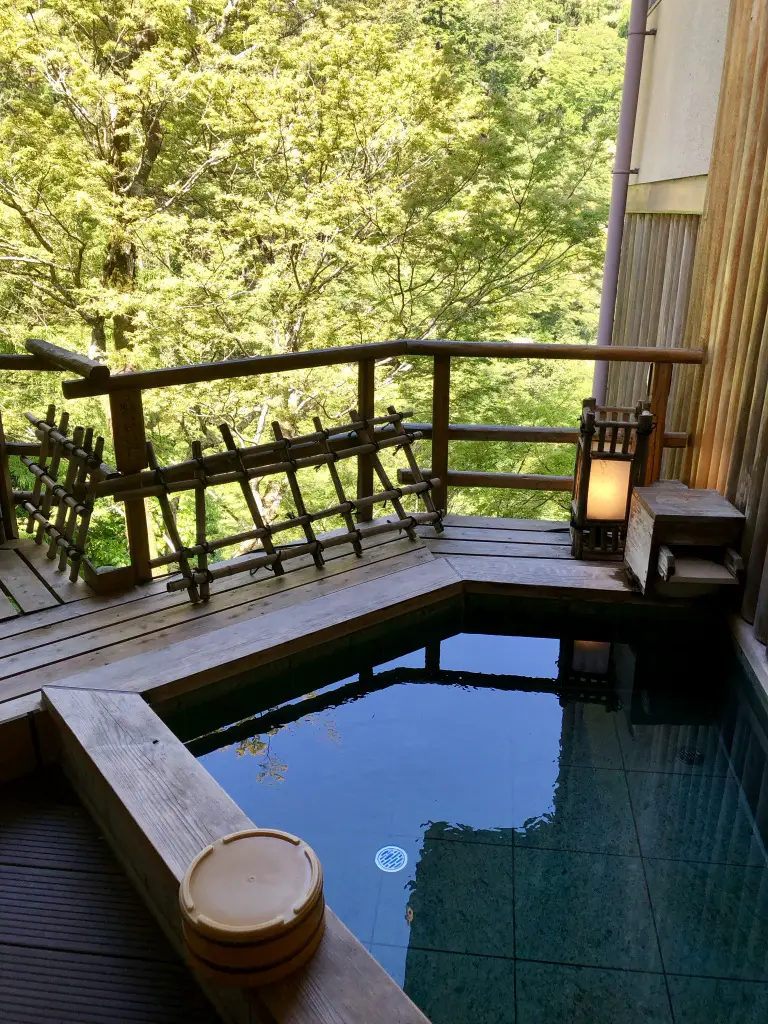
And now to this Kaiseki meal…
For foodies, this is where things get really exciting. Kaiseki refers to a traditional and ceremonial multi-course meal and the dishes are often designed to show great skill in the preparation. Although you get it all over Japan, especially in Ryokan, it is thought to stem from Kyoto and the royal banquets of the past. If you want to read more on the history, this blog is a great place to start.
Here’s what we ate at Momijiya Honkan:
Good kaiseki features local and seasonal ingredients and although the order of dishes can vary, it tends to follow a similar pattern. This is what we ate:
Sakizuke
A selection of bite sized appetisers always start a kaiseki meal. Often visually beautiful and complex to showcase the Chef’s skill. Such a pretty and wonderful tasting first plate of food. Every bite was different and everything was delicious, especially the grilled eel with pickled garlic shoot and what I think was dashi jelly.
Zensai
Depending on where you are in Japan, this small plate will either reflect the sea or the mountains. For us, it was woodland mushrooms and thinly sliced beef in a rich meat stock. The textures were perfect and I could have eaten 10 more bowls of this!
Tukuri
The fish course. For us, a plate of razor thinly sliced sashimi. I loved the pretty carrots and glass noodles that came alongside it. There was also a soy based dipping sauce.
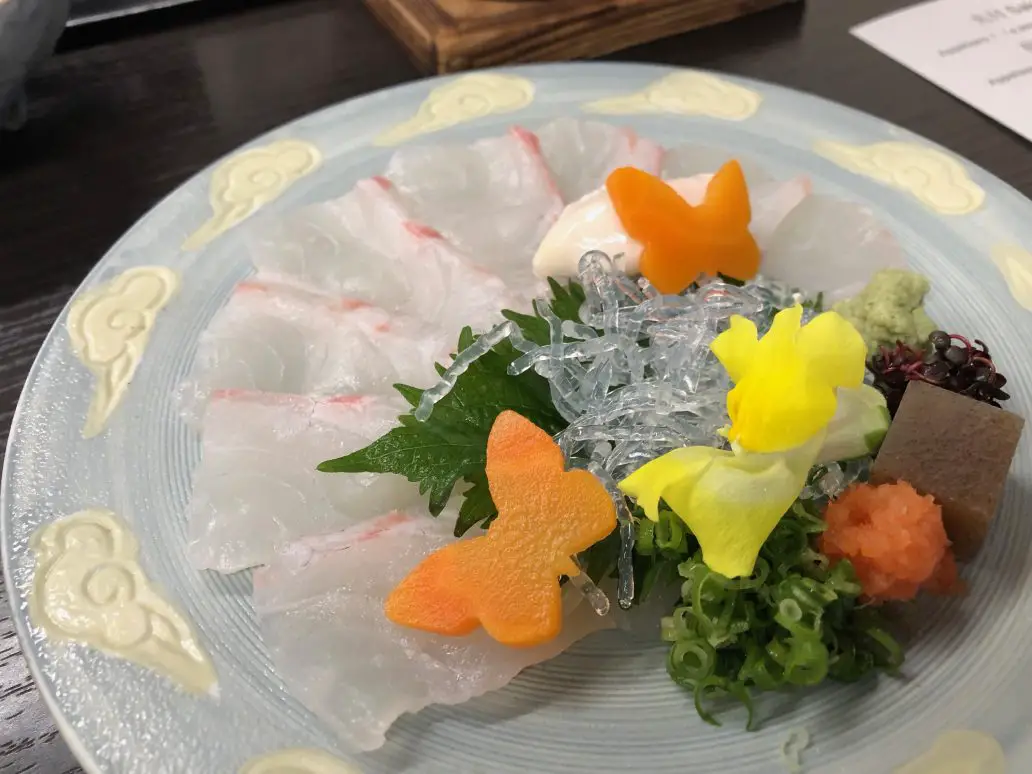
Mushimono
At first we weren’t sure if this was our dessert and it’d been served early. Turns out, it wasn’t even thought it was sweet! A delicious bowl of poached pear with black sesame seeds and a sesame sauce. It could easily have been dessert though.
Yakimono
A grilled dish. Again for us, this was fish. Two pieces of river fish with that wonderfully piquant pickled garlic root from the first dish.
Nabe
A beef and vegetable hot pot which we cooked at our table. The flavours were very natural and subtle but the wild mushrooms and the beef were delicious (despite looking the opposite in the below pic!). The waitresses came over to check how they were doing and told us when we could eat them which was helpful too.
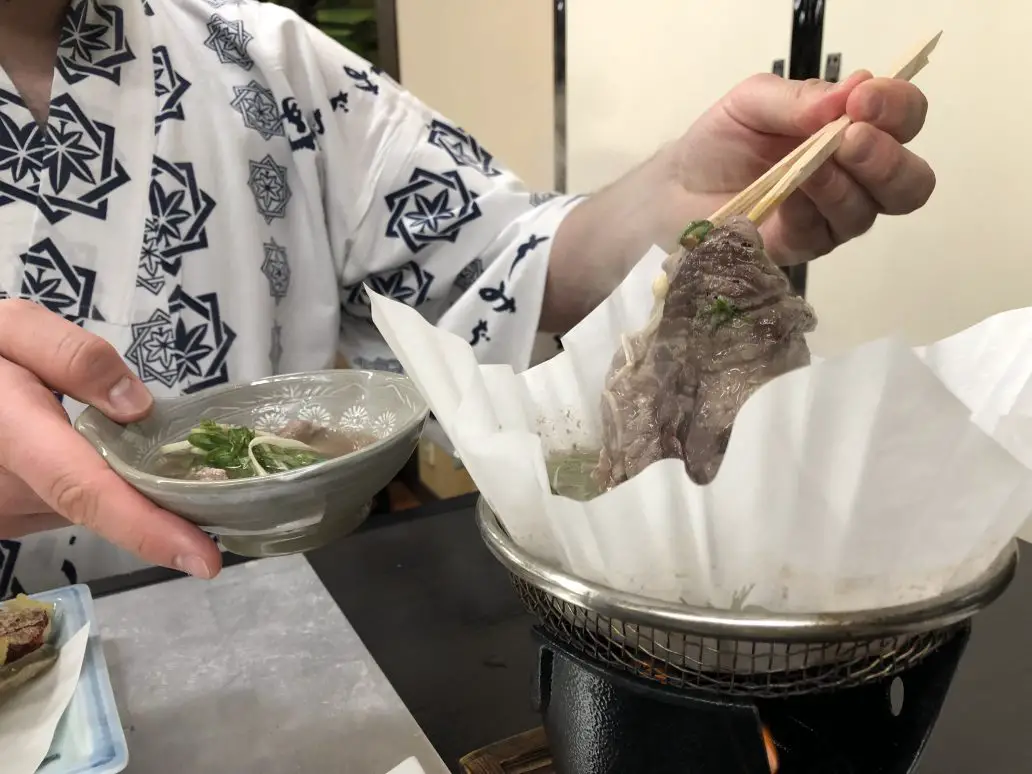
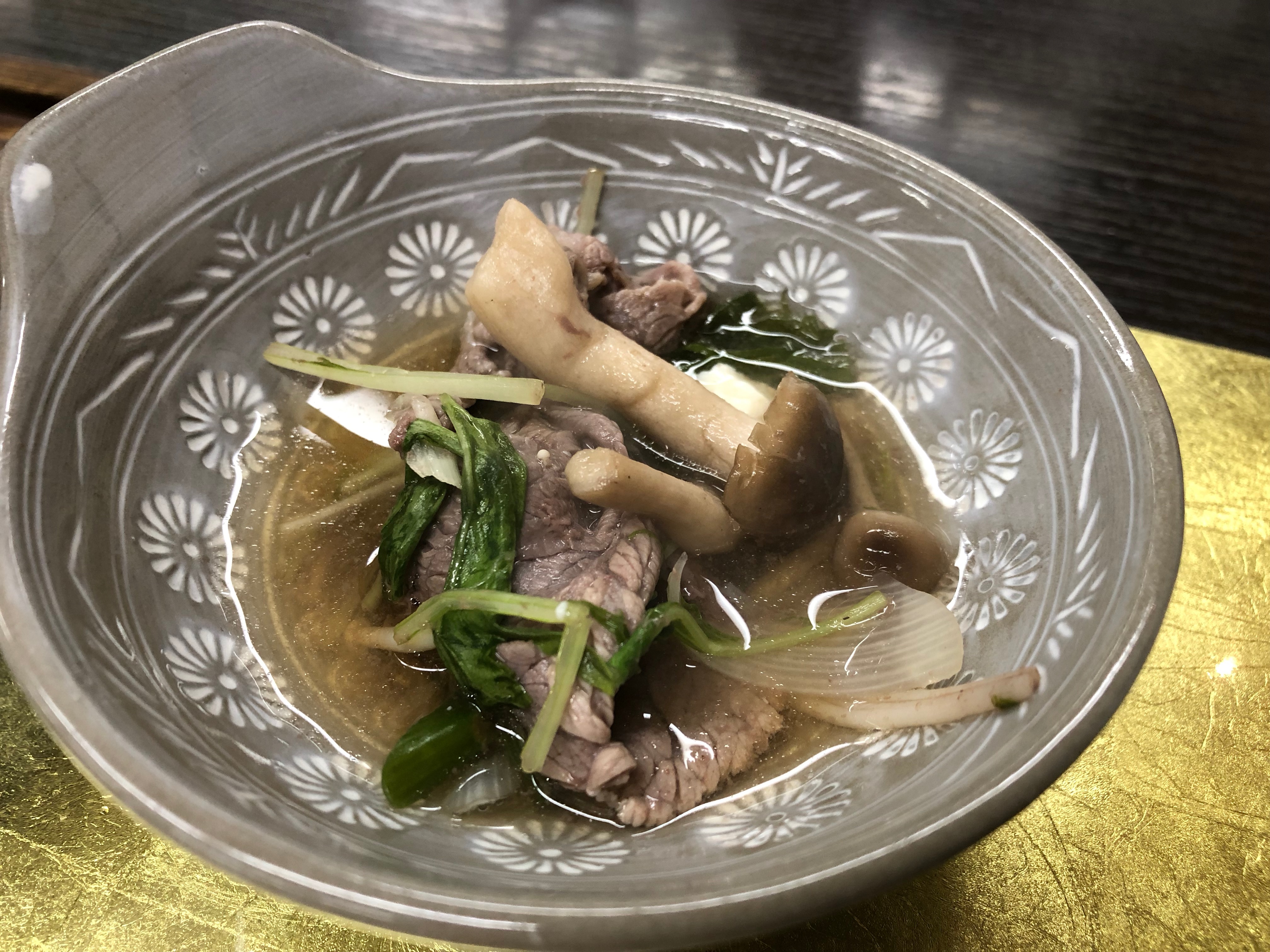
Agemono
Agemono means deep fried dish. What we actually had was tempura. It was served with a dipping sauce but unlike elsewhere, no salt. Sadly, it did need the salt as it was quite plain although beautifully done.
Gohan
This course was essentially a bowl of boiled rice with peas. Apparently it’s normally served at the end of the meal which I found a little strange as it would have been nice to eat with the Nabe and the Tukuri although that’s just me!
Tomewan
This miso soup was served alongside the Gohan but it was unlike any miso I’ve had before. It had tiny clams in it (presumably from the river nearby) and another taste which took us several more days of eating in japan to pin down. It’s almost aniseed/mouth numbing in flavour and we discovered it was Sansho Japanese Pepper. I’ve never seen these in the UK but would love to get my hands on some! Suggestions welcome!
Kounomono
Salty sweet pickled vegetables, served again, at the same time as the Gohan. I love Japanese pickles and these were great.
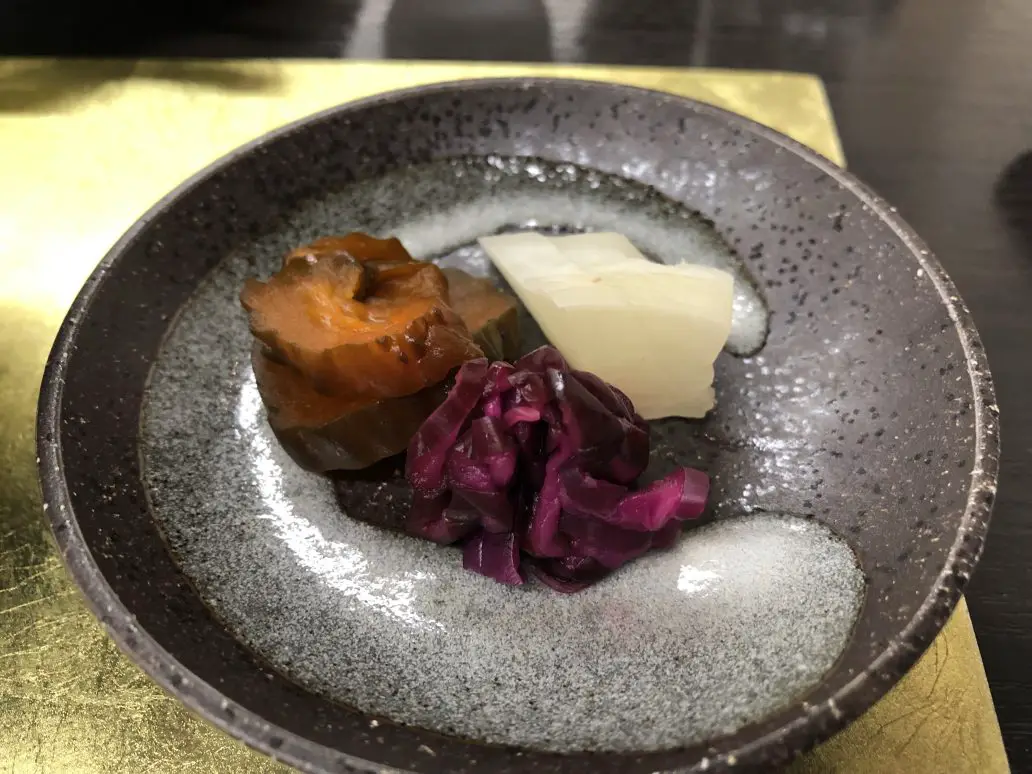
Mizumono
The final kaiseki course!! Fresh sweet melon and a clear jelly with strawberries. Totally delicious, palette cleansing and a perfect end to such a special meal. Not pictured here but we enjoyed a bottle of local sake with this too.
——————————–
After a really wonderful night’s sleep on our tatami mats with bellies full of kaiseki food, we woke up feeling completely relaxed and enjoyed a wonderful Japanese style breakfast before heading back into Kyoto for the next part of our adventure. We loved Momijiya Honkan and cannot recommend it highly enough! Of course there are plenty of other Ryokans to choose from too, especially in and around Kyoto. Kavey Eats loved Shiraume in Kyoto’s Gion District for example, and Nancy from enSquaredAired really enjoyed her time at Tenbouen in Kinosaki which is around an hour from Kyoto.
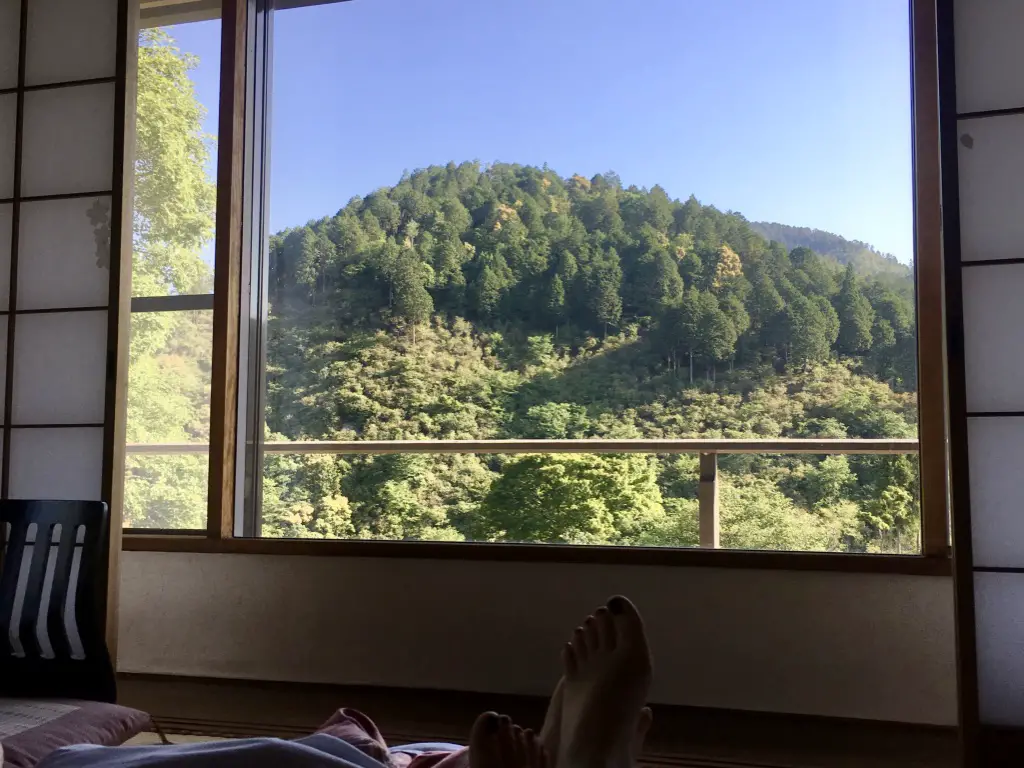
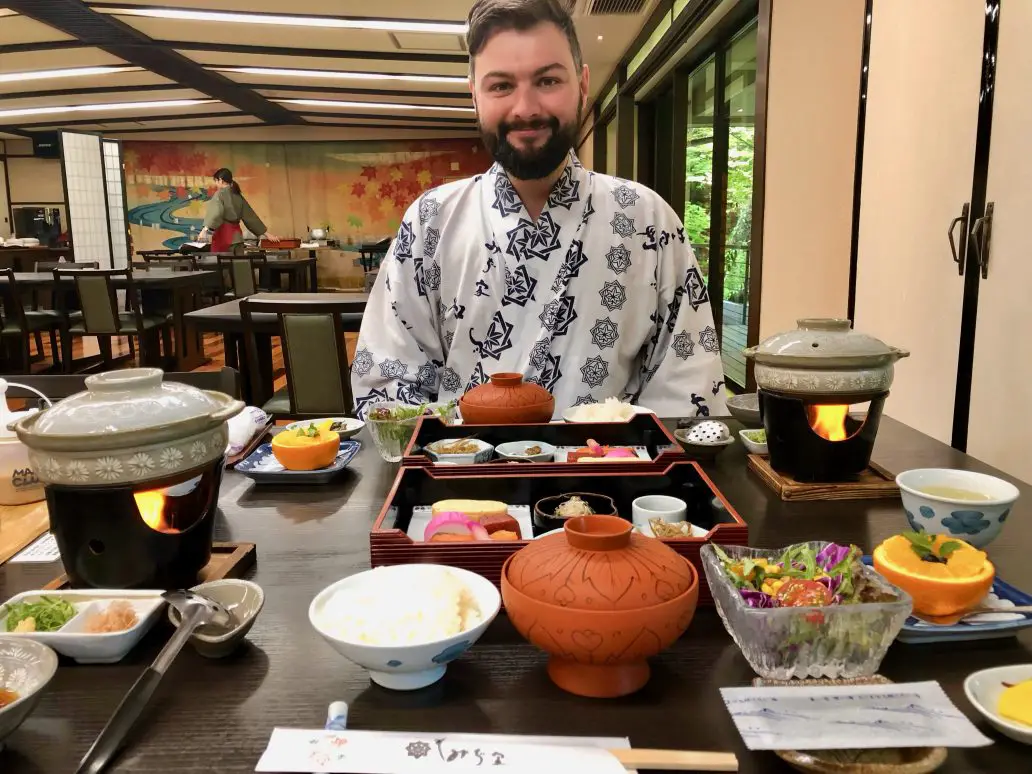
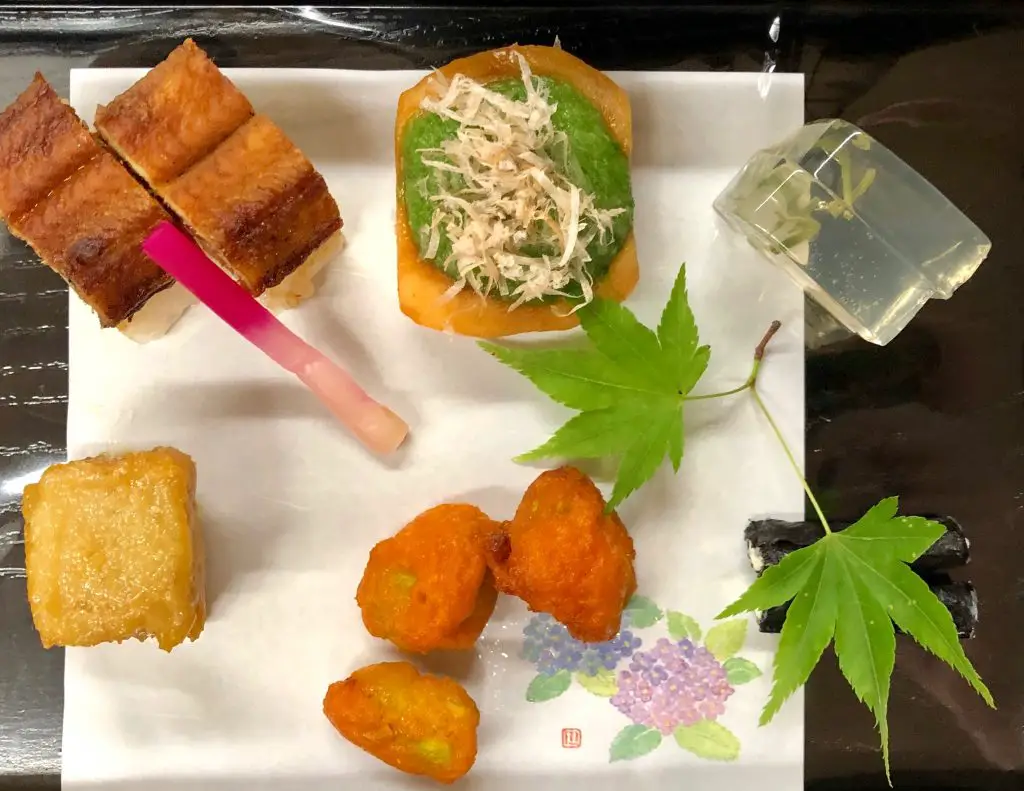



We adore the Ryokan experience, I really enjoyed reading about yours. Looks like you chose a great place for your first Japan trip! 😁
I was also very apprehensive about being fully naked in public baths but got over it quickly. I am also “wobbly” in a few places 🙂